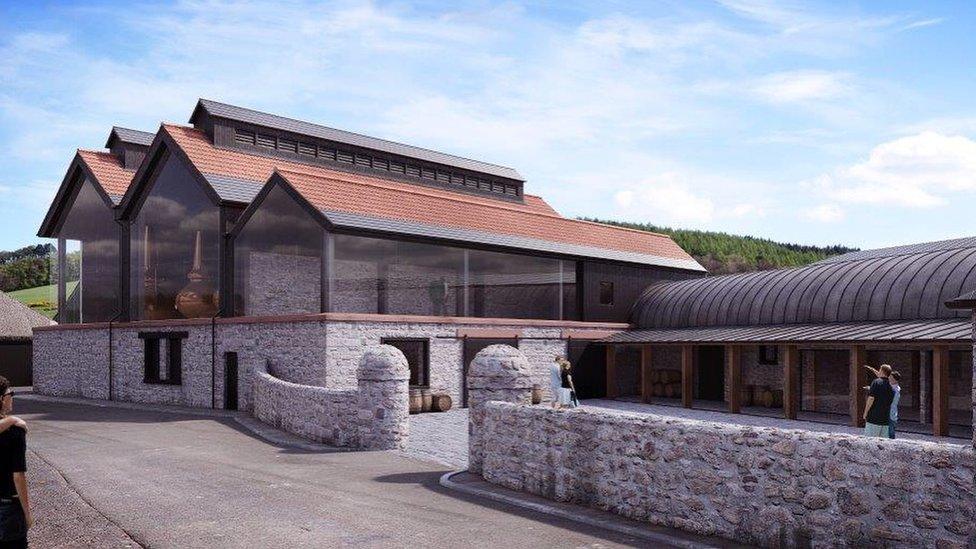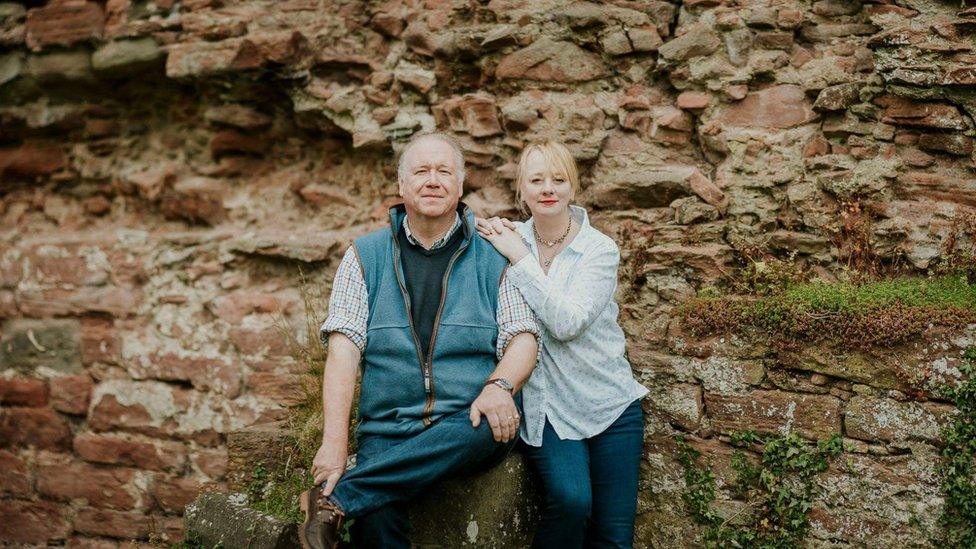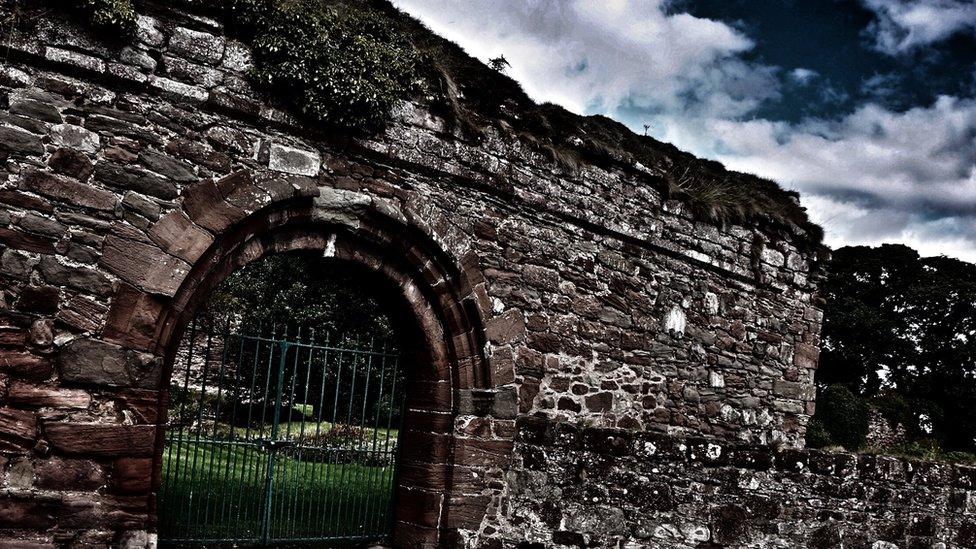New whisky distillery built at historic Lindores Abbey
- Published

The distillery will be built next to the historic abbey, near Newburgh in Fife
One of the Scotch whisky industry's most historic locations is set to become home to a new distillery.
Building work has begun at a site next to Lindores Abbey in Fife where whisky production dates back 500 years.
The project is the brainchild of Drew McKenzie-Smith, whose family have owned the 12th Century abbey and neighbouring farm for more than 100 years.
He hopes that the multi-million pound distillery and visitor centre will be up and running by next summer.
The finished whisky product should be available by 2023.
It will bring the history of Lindores Abbey full circle, as the earliest written evidence of whisky distillation in Scotland originates in its ruined grounds.
An exchequer roll records that in 1494 one of the abbey's Tironension monks, Friar John Cor, paid duty on malt to make "aqua vitae" for King James IV.

Drew and Helen McKenzie-Smith are the driving force behind the distillery project
The distillery will be constructed on the site of a 200-year-old farm steading, which was built from the abbey's stones and located next to the ancient monument.
Experts are now carefully demolishing the building before using the same stone to rebuild, convert and enlarge it into a modern distillery.
Mr McKenzie-Smith, a farmer, said that the distillery will use barley produced on his own fields to make the whisky.
"We'll be using the same fields that the monks used 500 years ago to make 'aqua vitae'," he added. "We'll be using the same fields under the same sunshine."
And he hopes the project could safeguard the future of the ruined abbey, which is the final resting place of the ill-fated first Duke of Rothesay.
It was also visited by William Wallace and King John Baliol before it was sacked at the behest of the reformer John Knox in 1559.
A royalty from the sale of every bottle of whisky is likely to go into a trust that will preserve the abbey.

The 12th Century Lindores Abbey was built by the Tironesian Monks who originated from France

The monks worked the surrounding land and brought modern methods of horticulture, brewing, animal husbandry and distilling from the continent
Mr McKenzie-Smith said: "To us, the history of Lindores Abbey is just as important as the plans we have to create a distillery.
"If it wasn't for the expertise of the Tironesian monks who came to Scotland in those dark and frightening medieval times we may not have the advanced industry we do today."
He hopes the development will draw tourists to the area around Newburgh.
"We believe a whisky distillery and visitor centre will help drive tourists to this part of Fife and, in turn, have a positive impact on the local economy," he said.